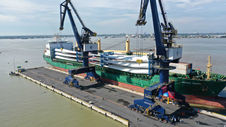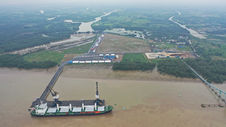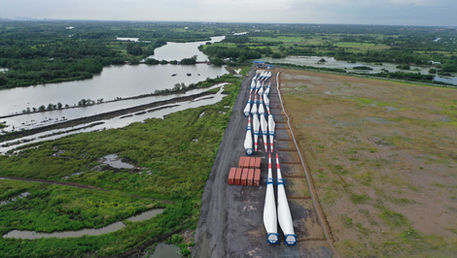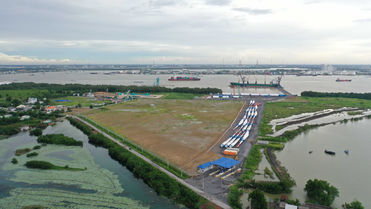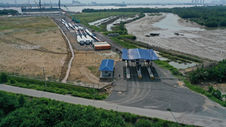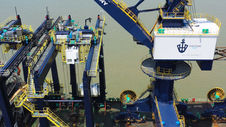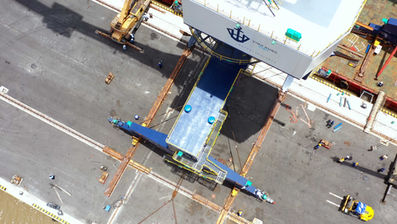OUR PORT
Vinh Hung Port is a private port for domestic and international cargo handling. Vinh Hung Port acts as a hub for transporting timber and import/export of general goods, such as:

WIND TURBINES

CHEMICALS

LOGS

STEEL, EQUIPMENT

WOOD CHIP
The port is adjacent to key industrial zones of Ba Ria - Vung Tau, Binh Duong, Dong Nai and Ho Chi Minh City. It is situated in a tightly connected river network that conveniently allows for the transport of goods from the port to Eastern and South-Western regions of Vietnam.
ACCESS CHANNELS
COORDINATES
10°41'20,77''N - 106°46'02,77''E
Situated in the most favorable geographical location, the port is easily accessible by road transportation via Ben Luc - Long Thanh - Dau Giay Expressway, and air traffic will be conveniently available through Long Thanh International Airport. Water transportation will be handled via 3 major international river routes (Soai Rap, Long Tau and Nha Be rivers), as well as a domestic water route of the Mekong River flowing from Eastern and South-Western regions to Cambodia.
-
Long Tau channel length 72m and depth -8,5m
-
Soai Rap channel length 67m, depth -9,5m
-
Tidal regime: irregular semi-diurnal, average tidal range 3m
-
Maximum draft 12,4m
-
Maximum size of vessel accepted 50,000 DWT ± 10%
-
Anchorage point: 10°20'N - 107°03'E

INFRASTRUCTURE
Vinh Hung Port is set to be operational by the second quarter of 2020. It will be spread across 26.3ha on land and will have a water surface area of ~10ha.
TERMINAL SPECIFICATIONS
-
Channel depth: -12.4m
-
Vessel capacity: 50,000 DWT ±10%
-
Two berths (total length: 360m, width: 32m)
-
Three bridges (total length: 720m, width: 15m)

PHASE I
Phase I started in December 2017 and was completed in the first quarter of 2020. Port yard, construction of the first berth, logistics, offices, roads, power system, water supply etc. were the major objectives of this phase.
This phase allows a throughput of 800,000 tonnes/year.
PHASE II
Phase II will commence in 2021 and will exhibit the construction of a second berth and warehouses.
This phase will scale up operations to a throughput of 1.5-2 million tonnes/year.





